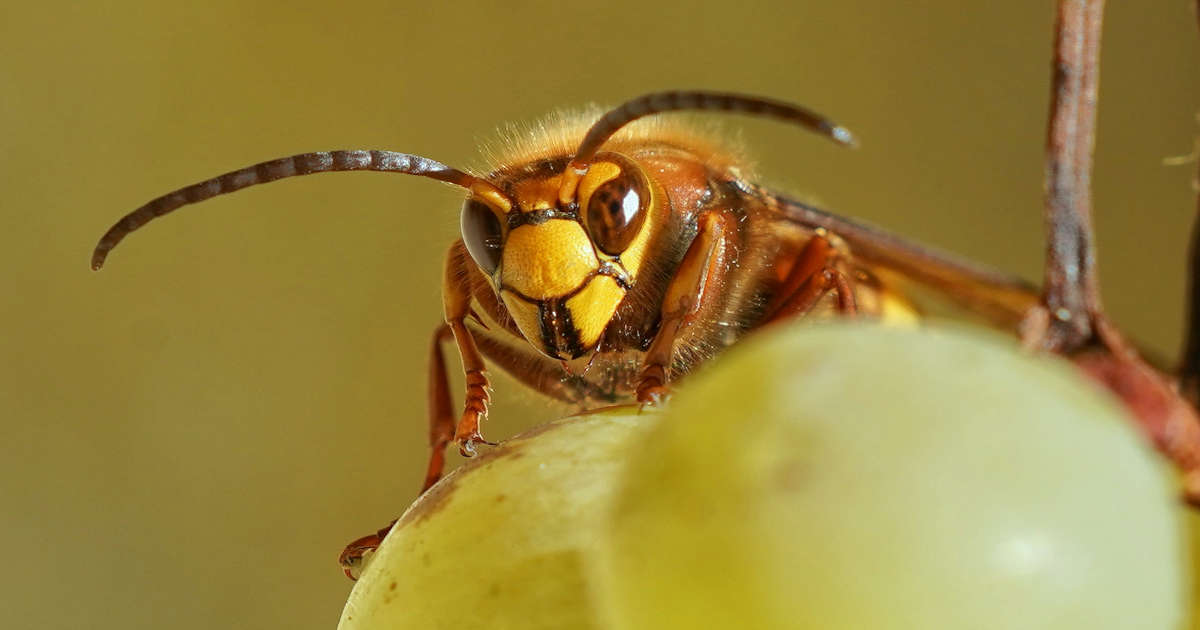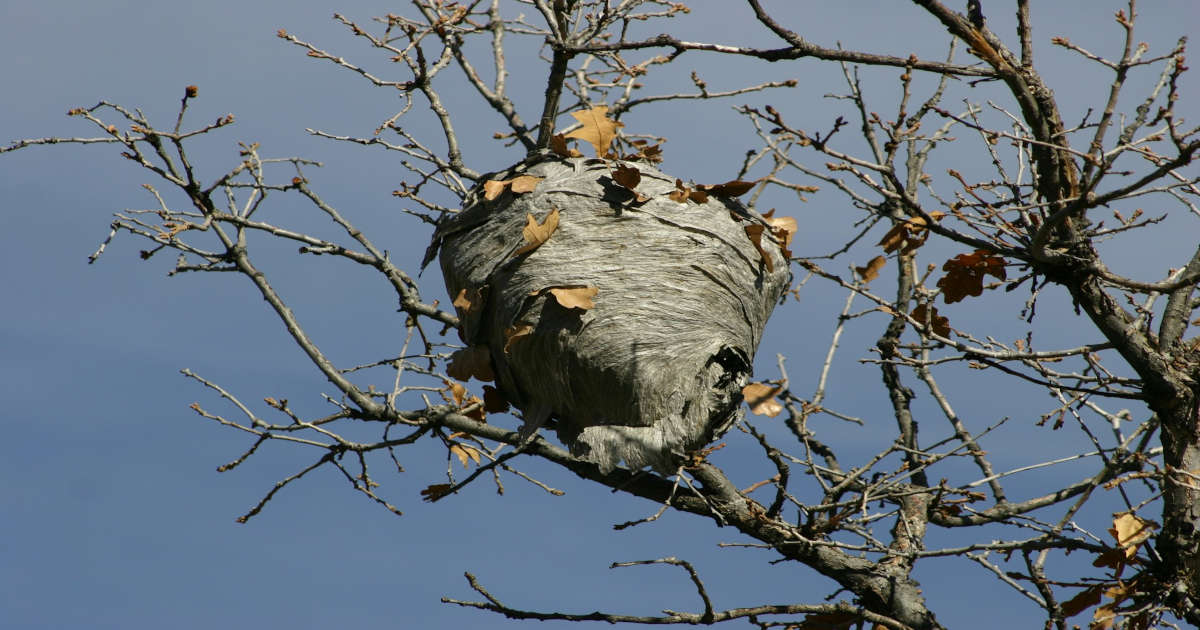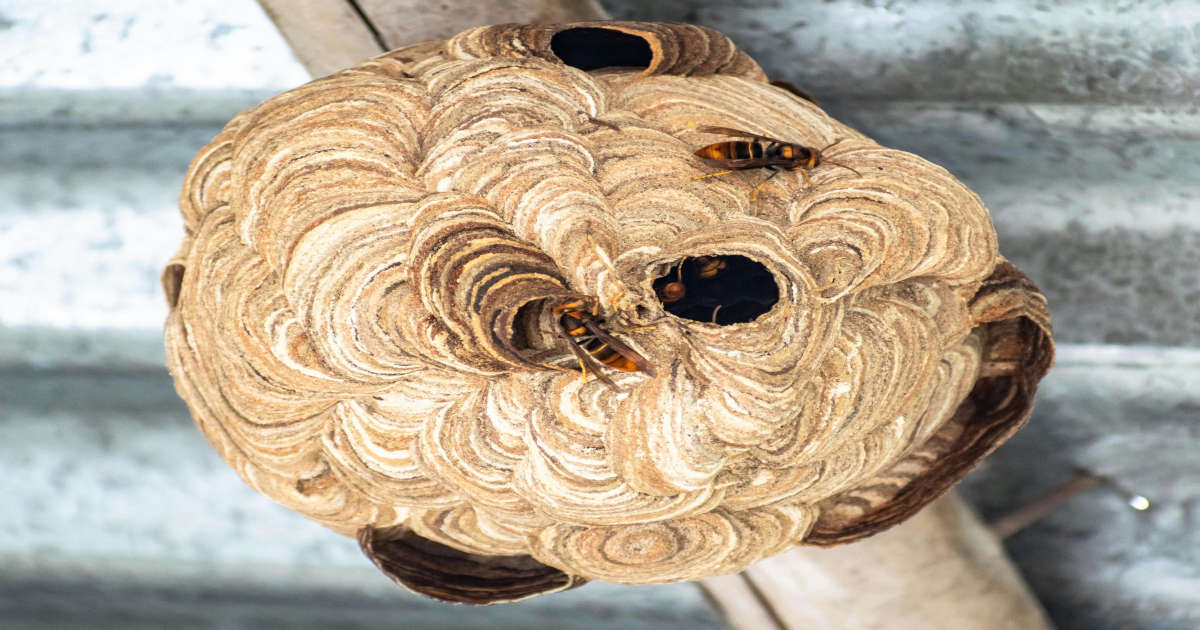Taking the Sting Out of Removing a Hornet Nest
Posted by Steven on April 08, 2025

Wasps and Hornets are beneficial to the ecosystem. They keep pest populations under control by preying on other insects. If a nest does not threaten you or anyone else, it is best to leave it alone. Hornets will leave the nest in the late fall or early winter when the temperature drops. In the spring, hornets and wasps will build a nest in a new location, they will never use the same place twice.
So, what do you do when that uninvited buzzing guest decides to settle in on your porch?
You will likely need to remove it. Hornets can be aggressive if they feel threatened. Their stings can be painful and deadly, especially to someone with allergies.
Here are some steps to identify and get rid of a hornet's nest.
Identifying a Nest
Before beginning with hornet nest removal, you need to first identify it. Here are a few ways to ensure it is a hornet's nest.
Location: Where Are the Hornets Hiding?
Here are some common locations for hornet's nests.
- Trees: Hornets nest in trees or large bushes, typically high off the ground.
- Bushes or shrubs:The nest may be concealed. Some hornets can be found nesting in the ground, creating burrows in the soil.
- Man-made structures:Hornets may nest in eaves, roofs, attics, wall voids, sheds, hollowed-out structures, and porches.
Appearance: What Does a Hornet Nest Look Like?
Hornets make their nest in a round or oval shape. Depending on the species and age of the colony, it can range from a few inches in diameter to over a foot. A hornet's nest will have a textured, paper-like appearance. It is made from chewed wood fibers mixed with saliva. Newer nests may appear grayish or off-white, while older ones turn brown or tan. The structure consists of multiple layers with the opening at the bottom.
Remember, bees typically construct wax combs and are typically found in cavities like hollowed-out trees or inside structures.. If it is a beehive and it needs to be removed, call a beekeeper instead of destroying it. A beekeeper can relocate the hive, save the bees, and allow them to continue to produce honey and pollinate the environment.
Activity
- You can see if hornets are making a nest using binoculars or standing at a safe distance.
- Hornets are most active during the day, especially in warm weather. Watch for hornets entering and exiting.
Safety Precautions
Before entering the removal process, take the following safety precautions.
- Protective Clothing: Make sure your entire body is covered. Wear thick clothing such as long sleeves, pants, gloves, safety glasses, and a hat. If available, use a beekeeping suit or a specially designed protective suit with a veil to cover your face and neck.
- Work at night: The best time to remove a nest is at night when hornets are least active. Use a red-filtered flashlight for visibility.
- Keep Your Distance: Try to maintain a safe distance and avoid sudden movement or loud noises; this could agitate the hornets.
- Have a Way Out: Make sure you have an escape route in case the plan goes south. Move slowly and deliberately away from the nest.
Hornet Nest Removal Process
After you have identified the nest and taken the proper safety precautions, it's time to get rid of the hornet's nest.
Gather Tools
Here are the tools needed for the job.
- Insecticide Spray
Use an insecticide spray specifically designed for hornets. Use a spray that can be used long range and follow the instructions.
- Trash Bag
or Container: Bring a bag or container to remove any debris.
- Extension Pole: Use an extension pole to reach the nest safely.
- Ladder: For help reaching the nest.
- Sealant: Seal entry points or openings to prevent hornets from rebuilding after removing the nest.
Removing the Nest
Follow these steps to remove the nest.
- Approach the Nest: To avoid alarming the hornets, move toward the nest slowly and quietly. Stay at least 6-10 feet away to reduce the risk of stings.
- Use Hornet Spray: Spray the insecticide directly into the nest's entrance. Saturate the nest thoroughly by spraying for several seconds.
- Wait 24 Hours: Don't come back until at least the next day to ensure hornets are eliminated. Watch for hornet activity or re-emergence.
- Removal, Cleanup, and Prevention: When you know the nest is inactive, remove it using a plastic bag or container. To prevent stragglers from escaping, double-bag the nest. The bag should be sealed and disposed of in a dumpster or trash bin. Clean the area with soap and water to remove insecticide residue. Look for nesting sites and seal any opponents to prevent hornets from re-infesting. Consider installing decoy nests or using repellents to keep hornets from returning.
- Monitor: Watch for signs of new nests or activity. If hornets persist, consider calling a professional.
When to Call a Professional
Removing a hornet's nest can be dangerous if you don't know what you are doing. If the nest is too large, it may be dangerous to remove. The rule of thumb is that if the nest is smaller than a tennis ball, you may be able to remove it yourself. Professionals will have better training, experience, and equipment to remove the nest.
They will also have a better understanding of laws and regulations. Some places have laws concerning the removal of certain species. Professionals have better protocols for stings and other emergencies. They will save you time and money in the long run by preventing future infestations.
